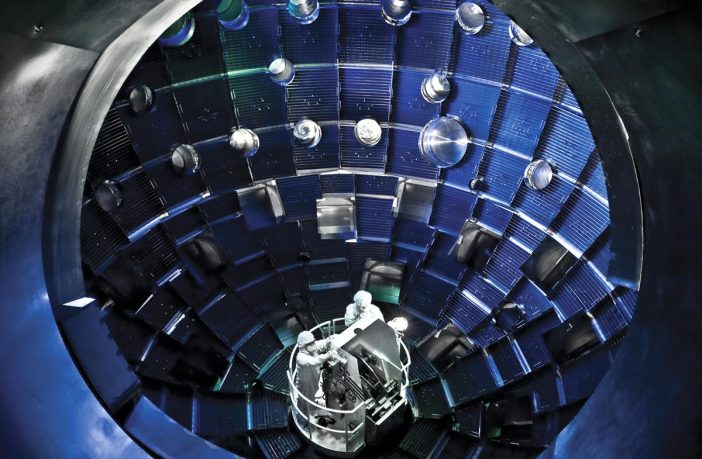- The U.S. Department of Energy (DOE) and DOE’s National Nuclear Security Administration (NNSA) has announced the achievement of fusion ignition at Lawrence Livermore National Laboratory (LLNL).
- This is a major scientific breakthrough decades in the making that will pave the way for advancements in clean electricity production with zero carbon emissions.
Fusion, the process that powers stars like our sun, promises an inherently safe, near-limitless clean electricity source for the long term, using small amounts of fuel that can be sourced worldwide from inexpensive materials. The fusion process brings together atoms of light elements like hydrogen at high temperatures to form helium and release tremendous energy as heat, which can then be converted into electricity.
On December 5, a team at LLNL’s National Ignition Facility (NIF) conducted the first controlled fusion experiment in history to reach this milestone, also known as scientific energy breakeven, meaning it produced more energy from fusion than the laser energy used to drive it.
Related news: UK hits milestone in nuclear fusion
This historic, first-of-its kind achievement will provide unprecedented capability to support NNSA’s Stockpile Stewardship Program and will provide invaluable insights into the prospects of clean fusion energy, which would be a game-changer for efforts to achieve President Biden’s goal of a net-zero carbon economy.
LLNL’s experiment surpassed the fusion threshold by delivering 2.05 megajoules (MJ) of energy to the target, resulting in 3.15 MJ of fusion energy output, demonstrating for the first time a most fundamental science basis for inertial fusion energy (IFE). Many advanced science and technology developments are still needed to achieve simple, affordable IFE to power homes and businesses, and DOE is currently restarting a broad-based, coordinated IFE program in the United States. Combined with private-sector investment, there is a lot of momentum to drive rapid progress toward fusion commercialization.
In the 1960s, a group of pioneering scientists at LLNL hypothesized that lasers could be used to induce fusion in a laboratory setting. Led by physicist John Nuckolls, who later served as LLNL director from 1988 to 1994, this revolutionary idea became inertial confinement fusion, kicking off more than 60 years of research and development in lasers, optics, diagnostics, target fabrication, computer modeling and simulation, and experimental design.
To pursue this concept, LLNL built a series of increasingly powerful laser systems, leading to the creation of NIF, the world’s largest and most energetic laser system. NIF, located at LLNL in Livermore, California is the size of a sports stadium and uses powerful laser beams to create temperatures and pressures like those in the cores of stars and giant planets.
The UK, EU and South Korea are also at advance stage of developing commercially viable fusion technology for energy production applications. Read more
Author: Bryan Groenendaal















